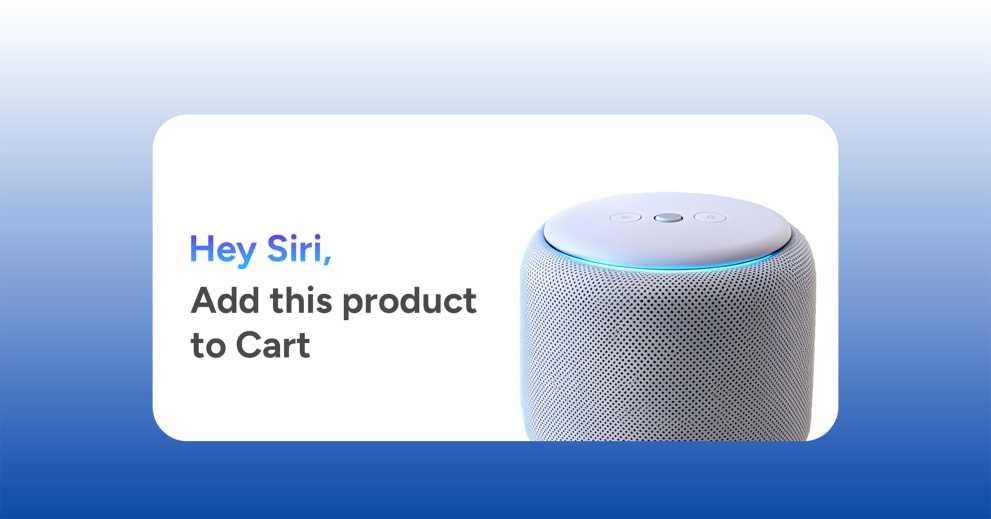Greetings! I'm Aneesh Sreedharan, CEO of 2Hats Logic Solutions. At 2Hats Logic Solutions, we are dedicated to providing technical expertise and resolving your concerns in the world of technology. Our blog page serves as a resource where we share insights and experiences, offering valuable perspectives on your queries.

“Alexa, add a new pair of running shoes to my cart.”
“Siri, what’s the best-selling coffee maker on Amazon?”
These voice commands are becoming increasingly common as consumers embrace the convenience and accessibility of voice commerce. Technology is advancing to make services convenient for their users. Voice commerce is one such convenient feature that makes things easier.
What is Voice Commerce?
Voice commerce, also known as voice-activated shopping, refers to using voice-enabled devices or virtual assistants to search for products, make purchases, and interact with brands through speech commands. This emerging trend is gaining popularity among consumers as businesses invest in integrating its capabilities into their online stores. Speech recognition and natural language processing (NLP) in e-commerce technologies allow customers to communicate with virtual assistants using conversational language, providing a more convenient online shopping experience.
Why Voice Commerce
Voice commerce eliminates the necessity to type, swipe, or click, especially for people with visual or other kinds of limitations. The core components enabling it are speech recognition, natural language processing, connectivity with AI assistants, ecosystem combinations, and security protocols. In combination, all these technologies transform the e-shopping experience, as consumers can look for products, shop, and track their orders using voice.
Benefits of Voice Commerce
Voice search for e-commerce brings benefits to your business. Take a look at the few:
Reduce shopping friction
This form of commerce is easier for users since they do not need to put much effort into shopping.
- Inclusive shopping
It unveils an extra level of shopping convenience since the gadgets are friendly to those with disabilities and other limitations to operating other interfaces.
Similarly to many other technologies and solutions, voice commerce is powered by artificial intelligence and machine learning, which enable the tool to provide recommendations and experiences that are unique and best suited for the user’s needs.
- Voice Search Optimization
Optimizing content for voice search is a crucial tip for e-commerce businesses. This means the content they use matches how users speak when searching with voice assistants. Then it will be easy to search for your requirements.
- Get valuable data
This produces data solutions that can be useful to e-commerce businesses to improve their operations and gain better results.
Disadvantages of Voice Commerce
The voice search for e-commerce comes with disadvantages too. Take a look at where you have to be careful about:
- Accuracy issues
There are chances of misinterpreting commands or queries. They can result in frustration and incorrect decisions when shopping. It may anticipate ongoing development in aspects of speech recognition and natural language processing.
- Integration Complexity
To implement it on your e-commerce site, there is a lot of planning that needs to be done, along with extensive coordination among the different departments.
- Brand Differentiation
Users should be able to distinguish themselves as well as locate brands in the niche. There is no text or written communication, your brand has to be locatable.
- Multilingual Support
Providing consistent and accurate voice recognition and natural language processing across different languages requires specialized expertise and resources.
- Security and Privacy
Gaining prior user consent for collecting personal data through voice interfaces is one of the major issues.
Optimizing Your Online Store for Voice Search
To optimize your online store for voice search and voice commerce, consider the following strategies:
- Incorporate Natural Language and Conversational Phrases
Adapt your content to use the language and phrasing that customers are likely to use in voice queries, including common question words and longer, more conversational phrases.
- Optimize Product Listings
Create clear and detailed product descriptions that voice-controlled assistants can easily understand, highlighting key features and benefits in a concise and informative manner.
- Create a Voice Search-Friendly User Interface
Ensure your website is easy to navigate using voice search, with an intuitive and voice-friendly site structure and layout.
- Voice-Activated Shopping
Incorporate voice commerce capabilities into your online store, enabling customers to browse products, add items to their cart, and complete transactions using commands.
- Improve Page Speed
People won’t wait for a long time. They may bounce from your page to another one. Check the page speed properly using the page speed checker and optimize it.
- Personalized Recommendations
Utilize voice-driven technology to offer personalized product recommendations to customers, creating customized shopping experiences that enhance satisfaction and drive sales.
- Voice-Optimized Product Information
Overhaul your product descriptions and content to align with the conversational nature of voice search, providing concise and informative responses to frequently asked questions.
- Mobile optimization for voice search
Since most searches happen on mobiles, a mobile-friendly store is essential for a seamless experience.
- Voice Analytics
Take advantage of analytics to gain insights into customer behaviour and preferences, informing your marketing strategies, inventory management, and overall customer experience.
Future of Voice Commerce
Thus, as trends in technology progress with the improvements in the areas of natural language processing and the appearance of AI assistants, voice commerce has the potential to become a more and more vital component of the overall e-commerce scenario. Adapting to devices, adopting voice search, and applying buying approaches will be major for e-commerce businesses to remain relevant.
Conclusion
Voice commerce is gaining momentum. It is expected to be a $45 billion channel by 2028. Currently, voice shopping brings in over $3.3 billion in revenue for consumers. Businesses can take advantage of this growth opportunity. Voice commerce is considered as one of the most convenient ways of Shopping for many. This is rapidly transforming the e-commerce landscape, offering a convenient and accessible shopping experience for consumers. While challenges like accuracy limitations and brand differentiation exist, continuous advancements in speech recognition and natural language processing are paving the way for a smoother voice commerce experience. Businesses that embrace voice search optimization and integrate voice-activated shopping capabilities can position themselves at the forefront of this evolving market. Explore e-commerce development services to see how you can harness the power of voice commerce and stay ahead in the competitive market.
FAQ
What's the difference between voice search and voice commerce?
Voice search helps you find products using voice commands, while voice commerce lets you actually buy products through voice. Voice search is "Hey Google, find coffee makers," and voice commerce is "Alexa, buy my usual coffee pods."
How does voice based commerce benefit businesses?
Voice based commerce increases sales by making shopping easier and faster for customers. It also provides valuable data about customer preferences and reduces shopping cart abandonment rates.
What is voice activated shopping?
Voice activated shopping lets you buy products by speaking to smart devices like Alexa or Google Home. Simply say "Add running shoes to my cart" and your voice activated shopping system handles the purchase.
Do I need special equipment for voice-enabled shopping?
No, voice-enabled shopping works with smartphones, smart speakers, or any device with voice assistants. Most people already have everything needed for voice-enabled shopping.

Related Articles





